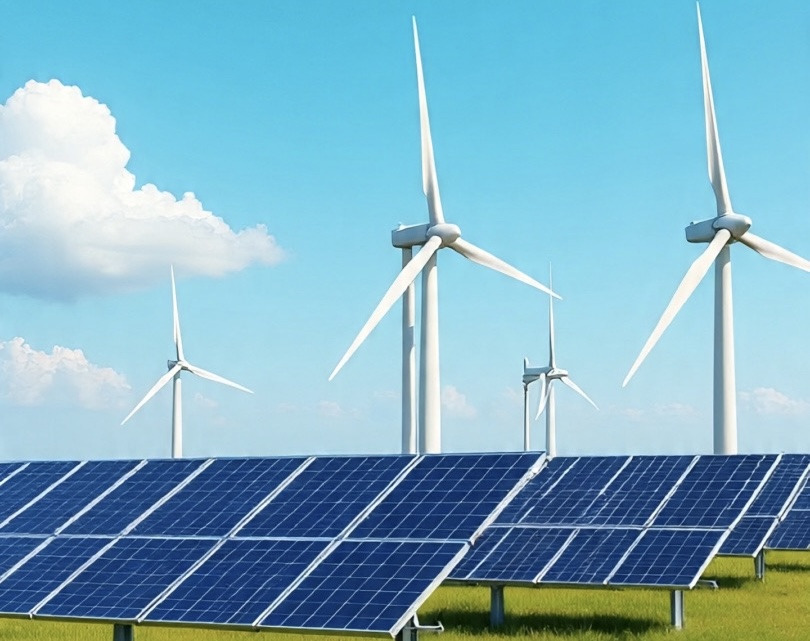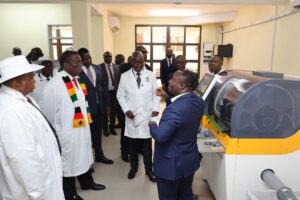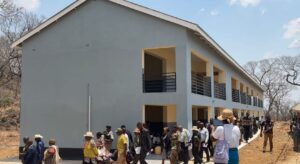Green Africa – The Rise of Renewable Energy Projects Across the Continent
5 min read
Editorial – Africa is experiencing a remarkable shift towards renewable energy, driven by the need for sustainable development, energy security, and climate change mitigation.
For decades, the continent has struggled with erratic electricity supply, high carbon emissions from fossil fuels, and limited access to modern energy for millions.

Now, with ambitious solar and hydroelectric projects taking shape across Zimbabwe, Kenya, and South Africa, a green revolution is underway—one that promises to redefine Africa’s energy future.
Zimbabwe, historically dependent on coal-fired power stations and hydroelectric energy from the Kariba Dam, is rapidly embracing solar power as an alternative.
The country’s chronic power shortages, worsened by droughts affecting Kariba’s hydroelectric capacity, have spurred both government and private sector investments in solar energy.
Key initiatives include the Munyati Solar Power Plant and several independent power producer (IPP) projects in provinces such as Mashonaland East, Matabeleland North, and Manicaland.

These projects, supported by partnerships with China, UAE, and regional investors, aim to add hundreds of megawatts to the national grid.
Rural electrification is also benefiting. Mini-grid solar systems are being installed in remote schools, clinics, and growth points, providing essential energy for refrigeration, lighting, and internet connectivity.
Organizations like the Rural Electrification Fund (REF) are rolling out solar-powered boreholes and irrigation schemes, transforming agriculture and access to clean water.
Zimbabwe’s government has set a target of 1,000 MW from renewable sources by 2025, positioning solar as a backbone of its future energy mix.
Combined with incentives such as tax rebates for renewable energy equipment and the growing availability of pay-as-you-go solar home systems, the country is steadily building a green foundation for inclusive growth.

Kenya stands as a continental leader in renewable energy, generating over 70% of its electricity from clean sources.
The country has long relied on hydropower from the Tana and Turkwel rivers, but recent droughts have exposed the need to diversify.
This has led to a surge in solar and wind projects, complementing its strong geothermal sector.
One of Kenya’s flagship solar projects is the Garissa Solar Power Plant, a 54.6 MW facility that supplies power to nearly 70,000 homes.
In addition, the government has expanded its Last Mile Connectivity Program, using small-scale solar and hybrid systems to electrify rural households.
Hydroelectric projects are also being modernized. The Seven Forks Hydro Complex is undergoing rehabilitation to enhance efficiency and resilience against climate variability. Meanwhile, community-based micro-hydro projects in the Mount Kenya region are powering tea factories, schools, and local industries.
Kenya’s success is attributed to its supportive policy framework, including feed-in tariffs, green bonds, and public-private partnerships.
With a vision to achieve universal electricity access by 2030, the integration of solar and hydro continues to be at the heart of its renewable energy journey.
South Africa, Africa’s most industrialized nation, has been grappling with a severe energy crisis characterized by frequent load shedding.
Traditionally reliant on coal, which accounts for over 80% of its power generation, the government has turned to renewables to diversify the grid and cut emissions.
The Renewable Energy Independent Power Producer Procurement Programme (REIPPPP) has spearheaded the development of large-scale solar and wind farms across the country.
Notable among these is the Jasper Solar Power Project in the Northern Cape, producing 96 MW and powering over 80,000 homes.
In addition to solar, hydro projects like the Ingula Pumped Storage Scheme provide 1,332 MW of capacity, helping balance the grid during peak demand.
Smaller hydro schemes along the Orange and Umzimvubu rivers are also being explored.
Private sector involvement has been significant, with mining companies and industrial parks now investing in on-site solar plants to reduce reliance on Eskom’s grid.
South Africa’s policy commitment to achieving 42% renewable energy by 2030 signals a long-term transition towards cleaner, more reliable power.
Several factors are accelerating renewable energy development in Africa.
African nations are aligning their policies with the Paris Agreement, aiming to reduce greenhouse gas emissions and adapt to changing weather patterns.
Overreliance on imported fossil fuels and vulnerable hydroelectric resources has underscored the need for diversification.
The cost of solar photovoltaic (PV) systems and battery storage has dropped dramatically, making renewable projects more affordable.
Institutions such as the African Development Bank, World Bank, and China’s Belt and Road Initiative are providing funding and technical expertise.
Renewable energy projects create employment opportunities in construction, maintenance, and supply chains while transforming rural economies.
Despite significant progress, challenges remain. Inconsistent policy frameworks, bureaucratic delays, and insufficient grid infrastructure often slow project implementation.
In some cases, corruption and policy uncertainty discourage long-term investors.
Hydroelectric projects face risks from climate change, including prolonged droughts that reduce water availability. Solar projects, while more resilient, require robust storage solutions and grid integration to ensure 24/7 supply.
Another concern is the affordability of renewable energy technology for low-income households, though innovations like pay-as-you-go systems and microfinance schemes are helping to close this gap.
Zimbabwe, Kenya, and South Africa are laying the foundation for a green future, but their successes could serve as a blueprint for the entire continent. Regional energy trade through initiatives like the Southern African Power Pool (SAPP) and East African Power Pool (EAPP) will allow countries to share surplus renewable power, improving stability and reducing costs.
Looking ahead, hybrid systems that combine solar, hydro, wind, and battery storage are likely to dominate.
Electric mobility, green hydrogen production, and decentralized energy systems (mini-grids and home solar kits) are emerging as the next frontier of innovation.
If current momentum is maintained, Africa has the potential not only to meet its own growing energy needs but to become a global leader in renewable energy exports—transforming the “dark continent” label into a beacon of sustainable progress.
The rise of renewable energy in Zimbabwe, Kenya, and South Africa is more than a response to energy shortages—it is a visionary step towards climate resilience, industrial competitiveness, and inclusive development.
From the solar farms of Garissa and Munyati to the hydro dams of Ingula and Seven Forks, Africa’s green revolution is lighting homes, powering industries, and inspiring a generation.
As the sun sets on coal and oil dependency, a new dawn powered by clean, renewable energy is breaking across the continent.
With the right policies, investments, and partnerships, Africa is not only going green—it is going bold.
——————————————
Zim Global Media News 🗞️
an Afrocentric Voice




